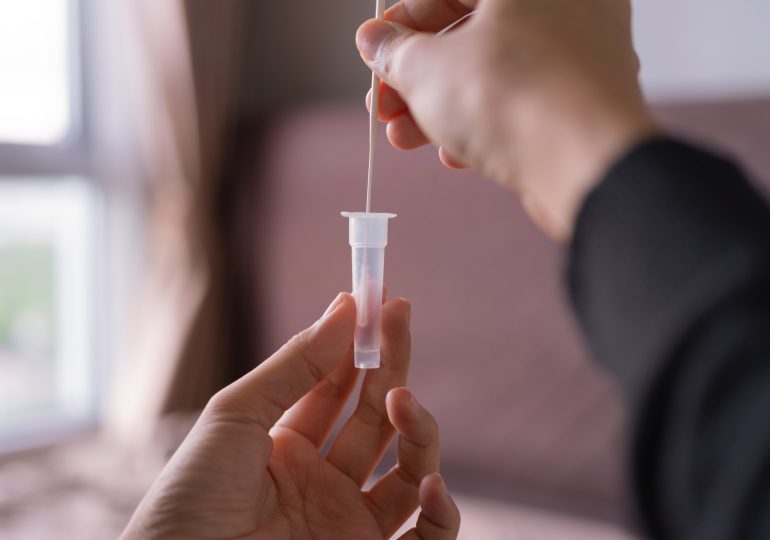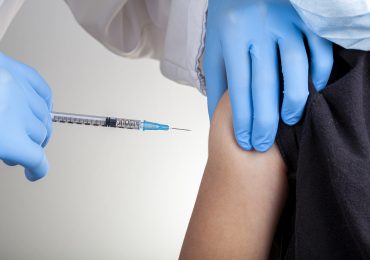These days, many people use at-home COVID-19 tests when they feel ill, rather than going out to get tested by a professional. (That’s when they bother to test at all.) But for all their convenience, the antigen tests commonly used at home have never been as accurate as PCR tests done in a lab—and the continued mutation of the virus raises additional concerns about their performance.
[time-brightcove not-tgx=”true”]
Rapid COVID-19 tests have never been perfect. How are they holding up as new variants emerge?
The U.S. Food and Drug Administration (FDA) continues to monitor the efficacy of the diagnostics it regulates—and as of August 2023, the FDA said none of the antigen tests on the market were expected to have reduced performance against Omicron or its subvariants. (All of the variants that have emerged since late 2021, including recent ones like KP.3.1.1, are relatives of the original Omicron strain.)
The FDA has also collaborated with a U.S. National Institutes of Health task force set up to monitor how variants affect tests. In 2022, well into Omicron’s dominant era, that team concluded that DIY diagnostics continued to work well. Task force member Richard Creager wrote in an email to TIME that the tests still seem able to catch the Omicron spinoffs that are circulating now. “The rapid tests are having no issue detecting the variants,” he wrote, noting that the protein that antigen tests look for has remained fairly stable as the virus changes.
Read More: Does Text Therapy Really Work?
Even if tests have remained constant, our immune systems haven’t. Early in the pandemic, an infected person’s “viral load”—the amount of virus in their system—tended to peak around the time their symptoms began. So if someone self-tested on the first or second day they felt sick, they likely had enough virus in their body for a rapid test to detect it.
Now that most everyone has prior immunity from multiple vaccines or infections, the timeline seems to be extended. Viral load now tends to peak around day four or five of symptoms, according to a study published in early 2024. That’s likely because the immune system is primed for action by its previous encounters with the virus, so it responds faster, even before lots of virus has built up in the body. A quicker immune response may mean a faster onset of symptoms.
“If your body has seen the virus before, you’re going to react to it and have an immune response more quickly,” explains study co-author Dr. Nira Pollock, co-director of the Infectious Diseases Diagnostic Laboratory at Boston Children’s Hospital. “That immune response can show up as symptoms.”
From an immune perspective, that’s a good thing. But it can complicate testing, because it means someone may not test positive for COVID-19 until they’ve already been feeling sick for days. In their recent study, Pollock and her co-authors estimated that a COVID-19 antigen test is somewhere between 30% and 60% accurate at detecting an infection on someone’s first day of symptoms, but up to 93% accurate on day four.
Based on such findings, Pollock and other researchers cautioned in a recent review article that people who are symptomatic shouldn’t assume they’re COVID-free based on a single negative antigen test result. Although it’s a hard sell for people who no longer take precautions, the ideal scenario is for someone to stay isolated—or at least wear a mask when around other people—and test again around day four of symptoms.
Read More: The 1 Heart-Health Habit You Should Start When You’re Young
“The instructions for these tests are to do serial testing,” Pollock says. “If you’re symptomatic, you should test early. But if you’re negative, you need to repeat it, because the amount of virus in your nose may not be high enough yet to detect.”
One other factor to consider: tests don’t last forever. Many people stockpiled tests when they were previously available for free through government programs and insurance, and those kits may have since expired. (You’ll soon be able to order four more free tests through the government.) The FDA’s website provides up-to-date guidance on determining how long your kits last.
Expired tests can still work, says Dr. Zishan Siddiqui, an assistant professor at the Johns Hopkins University School of Medicine. He co-authored a 2023 study on Abbott’s popular BinaxNOW tests, which found no major accuracy differences between unexpired tests and those that were five months past expiration. (Siddiqui’s other research suggests unexpired BinaxNOW tests accurately detect COVID-19 cases more than 80% of the time.)
But, although Siddiqui says he isn’t too worried about using expired tests, it’s good to remember that their performance can suffer if they’re long past their recommended use dates. If the control line on your test strip doesn’t show up or looks distorted, that’s a good indication that it’s too old to use, he says. Even in Siddiqui’s study, which found that expired tests still work, the lines on the old tests showed up more faintly than on fresh tests, making them harder to read.
Whether your tests are old or brand new, it’s good to use some healthy skepticism when interpreting their results. “I trust these tests,” even as the virus evolves, Siddiqui says—but a single result doesn’t always tell the whole story. If you have COVID-like symptoms but test negative, it’s best to be cautious and retest in a few days.
Leave a comment




